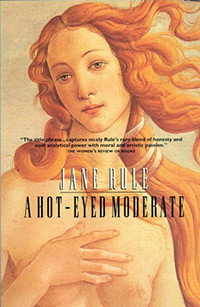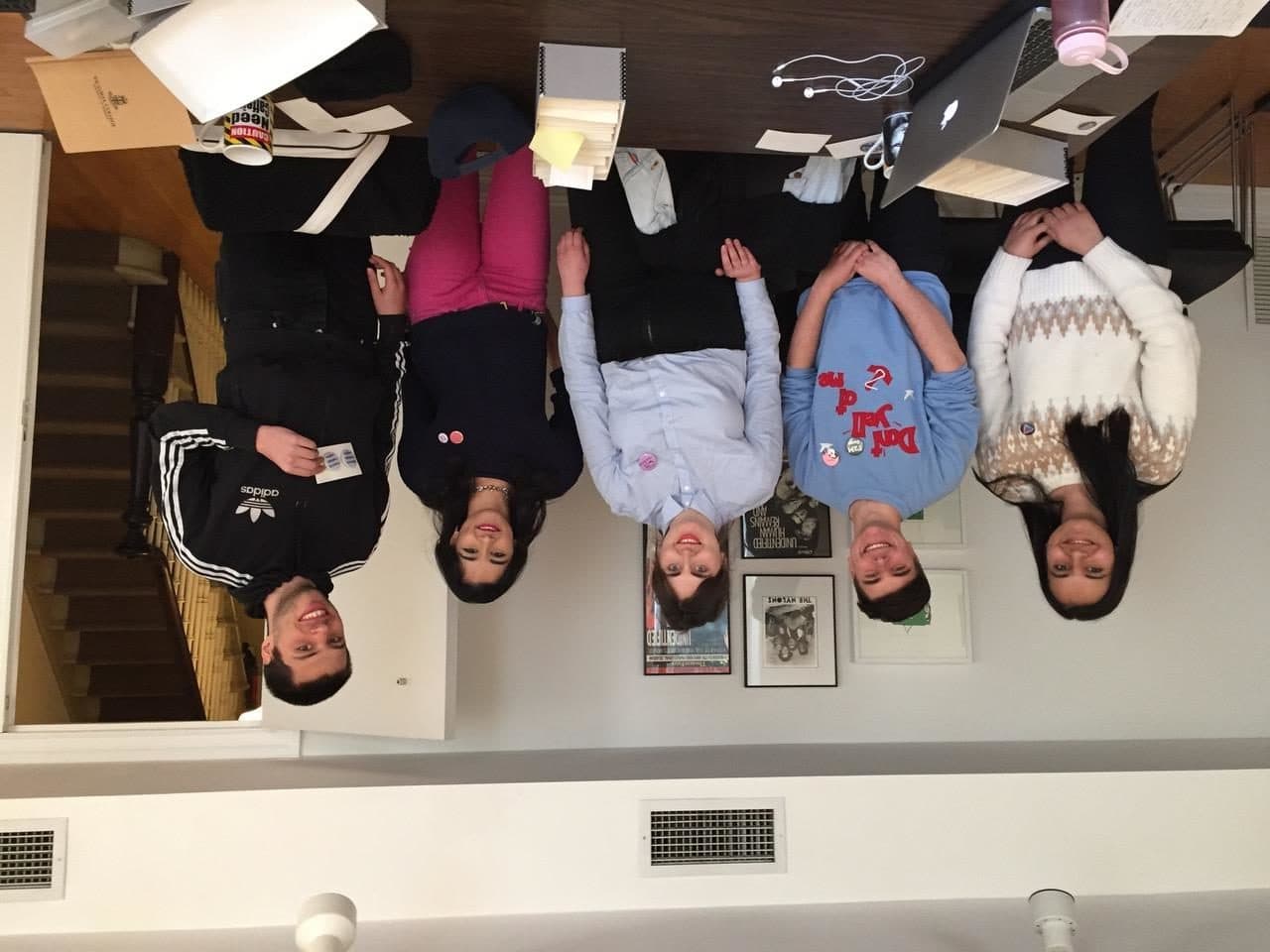By Lo Humeniuk

I feel as though viewing Donna Deitch’s film Desert Hearts (1985), the adaptation of Jane Rule’s 1964 novel Desert of the Heart, is for many a rite of passage. It is an early entry into the lesbian film canon and for me, it was an introduction to Jane Rule’s work as a fiction writer.
Although born in Plainfield, New Jersey, Jane Rule is considered by many as a prominent Canadian lesbian writer, and she addresses this responsibility and her role in essays such as “Lesbian and Writer” and “Lesbian Leadership.” With a collection of over 15 books, short stories in various publications, and regular columns in The Body Politic, she has certainly made a significant contribution to the 20th century literary canon. Although often thought of as a fiction writer, Rule was also an avid essayist. On occasion I do a lot of homework before opening a new book, but I approached A Hot-Eyed Moderate with minimal preparation and was delighted by what I found. Published in 1985 by Naiad Press, this book is a compilation of 47 essays touching on a broad, but well organized, range of topics.
Rule organized the book into four segments, each becoming more personal than the last. In Part 1, Rule shares essays on the practice of writing itself, looking at how to write; the importance of context; the purpose and function of autobiography; and feminist presses, all of which serve to share her frame of reference and broadly introducing us to her and her thoughts. Throughout the essays, Rule finds the sweet spot of balancing professional writing with accessible language.
In Part 2, she narrows the window slightly by focusing on “Writing for the Gay Press.” At this point, she looks at sexuality and aging; unity among oppressed groups; jealousy; tokenism; polyamory; and many other topics and themes that were not necessarily being covered by the mainstream media.
The publisher’s back-cover blurb is more a caveat than a promotional piece— it warns the reader that “Jane Rule’s frank opinions […] may sometimes shock.” and refers to the collection as “forceful.” I found myself constantly revisiting the fact that while the topics she’s discussing certainly weren’t new, many of them are only beginning to be discussed comfortably now- ideas like intersectionality (which comes up more than once), like polyamory (“The Myth of Genital Jealousy”), like white guilt (“For the Critic Who Wasn’t There”). Many of Rule’s ideas and perspectives, given the time of publication, seem fresh and progressive, and I can’t help but wonder what impact her writing may have had on future writers and activists.

In Part 3, Rule draws out beautiful narrative profiles and memories on the lives of several artists who appear to have had had a significant impact upon her, and she follows this up with personal reflections in part 4. The final section—arguably the most autobiographical and personal, though not to say the entire book doesn’t feel intimate—has an interesting quality in that, while Rule is writing about her own experiences, she writes in fine detail, which gives one the feeling that she is narrating or describing a moment as she is watching it unfold.
A Hot-Eyed Moderate was such a pleasant read—and an interesting one to visit when looking at Rule’s opinions and politics in the 1980s, and what current politics are. The essays are short and thoughtful, as though Rule kept a notebook of thoughts and musings and this is the output of her ruminations on those thoughts. The structure—of narrowing in the deeper you get into the book—makes for a smooth flow, though that’s not to say one can’t jump into this book at any point and enjoy Rule philosophizing on any number of issues. This book has a unique point of view that is insightful, engaging and it’s worth the read.

